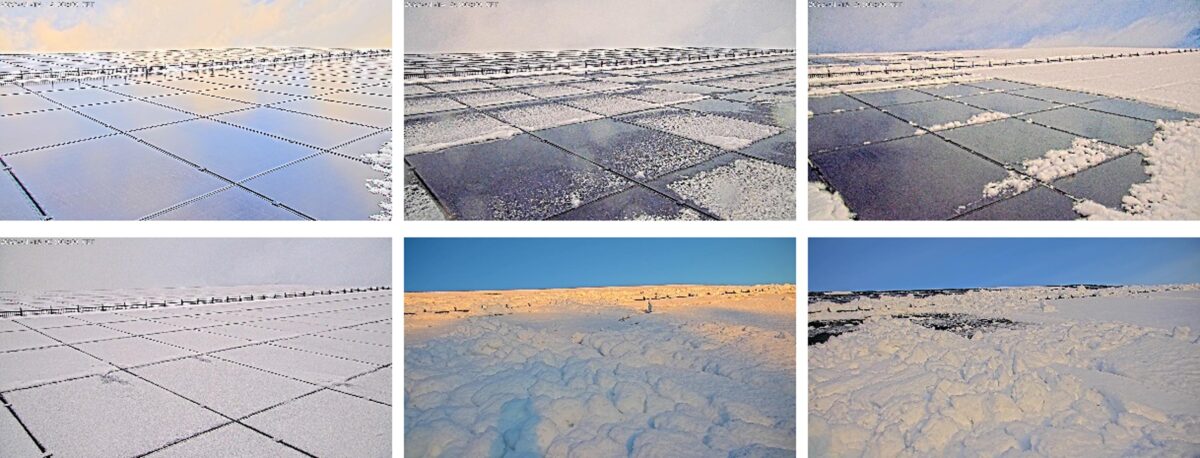Scientists from the Norwegian University of Science and Technology (NTNU) and research institute SINTEF have sought to assess the impact of icephobic nanomaterial coatings in PV systems located at high latitudes and found that these materials may effectively reduce snow and ice accumulation.
“The additional PV energy production achieved with this solution depends on the climate conditions where the case study is located,” Mattia Manni, the research's lead author, told pv magazine. “In particular, it depends on the amount of snow and ice accumulating on the PV surface throughout the year.”
Manni also explained that the icephobic materials tested on solar modules are still far from being available on the market since they present high degradation rates. “Therefore, it is not possible so far to provide information about their costs and the economic feasibility of the interventions,” he stated.
The research group assessed the snow deposits on photovoltaic panels and the consequent energy losses via the PVsyst software and utilized the so-called Marion’s algorithm (MA) for evaluating the sliding coefficient.
“The proposed workflow moves from an assessment of snow deposits on PV panels and the consequent reduction of plane of array (POA) irradiance to an evaluation of the influence of icephobic nanomaterials on snow losses,” the group explained, noting that this assessment was made for three locations in Norway – Oslo, Bergen, and Trondheim.
Through this analysis, which was conducted between November and April, the scientists found that snow losses reached 32.75 kWh/m2 in Oslo, 25.05 kWh/m2 in Trondheim, and 5.85 kWh/m2 in Bergen. The application of icephobic coatings resulted in a reduction of energy loss of 12.05 kWh/m2 in Oslo, of 10.00 kWh/m2 in Trondheim, and of 3.35 kWh/m2 in Bergen.
“Therefore, the effectiveness of the icephobic coatings is equal to 65% in Oslo, 60% in Trondheim, and 45% in Bergen,” they added, stressing that these data should be verified by integrating them with other experimental data from various high-latitude locations and PV systems, while also performing a sensitivity analysis of the ice adhesion strength of the PV panels.
Their findings are available in the study “The influence of icephobic nanomaterial coatings on solar cell panels at high latitudes,” published in Solar Energy.
This content is protected by copyright and may not be reused. If you want to cooperate with us and would like to reuse some of our content, please contact: editors@pv-magazine.com.




By submitting this form you agree to pv magazine using your data for the purposes of publishing your comment.
Your personal data will only be disclosed or otherwise transmitted to third parties for the purposes of spam filtering or if this is necessary for technical maintenance of the website. Any other transfer to third parties will not take place unless this is justified on the basis of applicable data protection regulations or if pv magazine is legally obliged to do so.
You may revoke this consent at any time with effect for the future, in which case your personal data will be deleted immediately. Otherwise, your data will be deleted if pv magazine has processed your request or the purpose of data storage is fulfilled.
Further information on data privacy can be found in our Data Protection Policy.